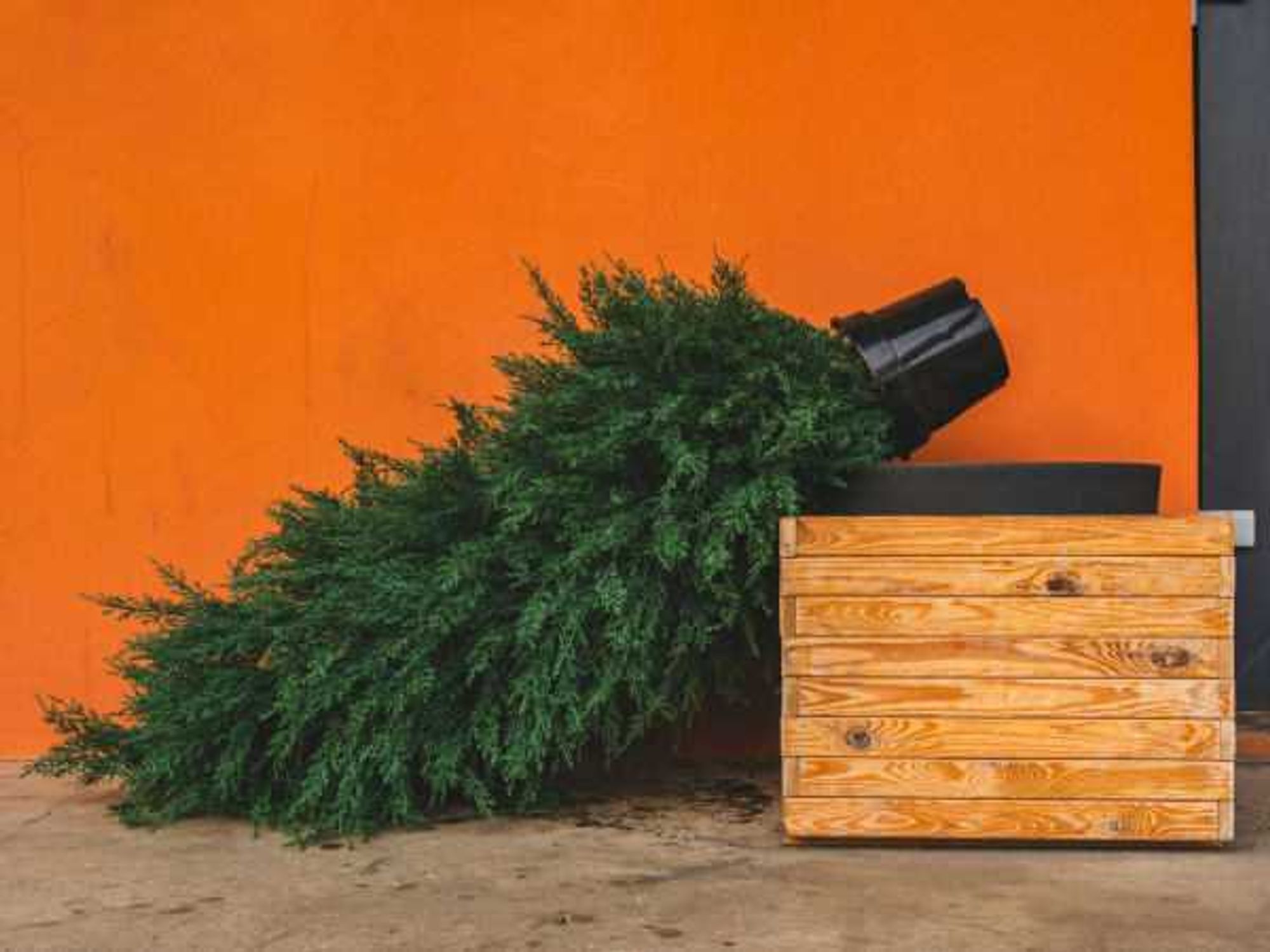The holiday season brings a lot of joy, gifts, and delicious food, but it can also generate a lot of waste. Landfills can eat up food scraps that can composted, wrapping paper that can be recycled, usable appliances or home goods that were replaced with upgraded versions, or even unwanted gifts or tchotchkes.
To help reduce the amount of waste that goes into Austin’s landfills this holiday season — and to clarify what can't be recycled — we’ve created this guide detailing recycling drop-off centers, composting tips, and ideas on what to do with those used or unwanted items.
Recycling tips
Natural Christmas trees
Austinites residing in the city limits can set their trees at the curb on their designated composting collection day starting December 26. Alternatively, they can drop off live trees, wreaths, and garlands at Zilker Park from December 28 to January 3, 2026, from 10 am to 2 pm. The City of Austin website has a list of additional drop off locations.
From December 26 to January 10, Travis County residents can drop off their natural Christmas trees at one of the following locations for free recycling:
- West Service Center, 4501 FM 620, Austin
- Del Valle Adult Softball Complex, 3614 FM 973, Del Valle
- Northeast Metro Park, 15500 Sun Light Near Way, Pflugerville
- Collection Center, 2625 Woodall Dr., Leander
- East Service Center, 6011 Blue Bluff, Austin
Trees must have all ornaments, decorations (including tinsel), lights, and stands removed for recycling, and wire frames must be removed from natural wreaths and garlands. Trees sprayed with artificial snow will not be accepted. Do not place the trees in bags.
Wrapping paper, ribbon, and bows
The City of Austin accepts plain wrapping paper in their blue recycling bins, but wrapping paper with glitter or foil cannot be recycled and must be put in the trash. Ribbons and bows are non-recyclable, but can be saved and re-used for future gifts.
Broken holiday lights
Strings of holiday lights that are broken or non-functioning can be dropped off at the Recycle and Reuse Drop-off Center, located at 2514 Business Center Dr. in Austin. The center is open by appointment only, and drop off appointments can be made online.
What to do with unwanted gifts and used items
Buy Nothing groups
If you received an upgraded gift of something you already own but the original item still has plenty of life left in it – such as a kitchen appliance, gardening tool, or a piece of furniture – consider donating it through a local Buy Nothing group. Most neighborhoods' Buy Nothing groups are also active on Facebook. They're a great resource for saving money on new things and preventing used (but still useable) items from ending up in a landfill.
Here’s how it works: You post a few photos of an item that is in good condition and that you no longer want. If a neighbor claims the item, you then coordinate a time for them to come pick up the item or for you to drop it off at their home.
Creative Reuse Centers
Rather than letting a puzzle or board game sit in a closet until the next holiday season, locals can take them to reuse centers lile Austin Creative Reuse or Use2 Neighborhood Reuse Center. They also accept other materials like art supplies, fabric, yarn, scrapbooking supplies, collectibles, puzzles, and much more.
Half Price Books
Half Price Books will buy your new and “pre-loved” books, comics, magazines, CDs, movies, collectibles, games, and Legos. We can’t guarantee they’ll pay a lot, but if you want a little cash to purchase something you’ll actually enjoy while not letting those unwanted items go to waste, at least there’s a silver lining.
Reducing food waste
Composting
Contrary to popular belief, landfills are designed “to bury trash – not to break it down,” to borrow a phrase from a detailed explanation by a zero-waste project in Colorado. One classic example discovered by archaeologist William L. Rathje is a head of lettuce that hadn't decomposed in 25 years.
Instead of tossing food scraps and waste into the trash can, City of Austin residents can toss food items like produce, cooked or raw meat, dairy, seafood, and even bones in their green composting bin, and set out on the curb on their designated collection day. The city takes some items that aren't traditionally thought of as compostable by people who do it at home.
The following items are also compostable:
- Food: Leftovers, spoiled food, cheese, nuts, grains, bread, baked goods, pasta, eggshells, coffee grounds, tea bags, tea leaves, jelly, candy, and snack foods
- Yard trimmings: Grass clippings, small branches, small tree limbs, tree roots, flowers, leaves, plants, and straw
- Food-soiled paper: Paper bags, paper napkins, paper towels, paper plates, paper cups, paper take-out containers and take-out boxes (with no plastic or wax coating, and with metal removed), pizza boxes, coffee filters, microwavable popcorn bags, newspaper, and tissues. (New this year, waxy food containers can be recycled instead.)
- Natural fibers: Popsicle sticks, sawdust (in paper bags), shredded paper, toothpicks, wooden chopsticks, and untreated wood
The following items should not be placed in the composting bin: Liquids, fats, oils, grease, plastic, glass, metals, styrofoam, glossy paper, window envelopes, cotton balls, cotton swabs, painted or treated wood, rocks, soil, and tree stumps.
The City of Austin has a composting guide available online with a full list of acceptable and non-acceptable compostable items.

